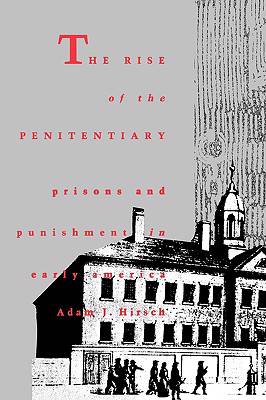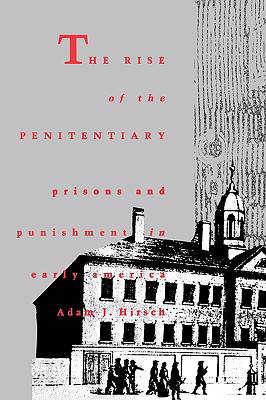
- Afhalen na 1 uur in een winkel met voorraad
- Gratis thuislevering in België vanaf € 30
- Ruim aanbod met 7 miljoen producten
- Afhalen na 1 uur in een winkel met voorraad
- Gratis thuislevering in België vanaf € 30
- Ruim aanbod met 7 miljoen producten
Zoeken
The Rise of the Penitentiary Prisons and Punishment in Early America
Prisons and Punishment in Early America
Adam J Hirsch
€ 113,95
+ 227 punten
Omschrijving
Before the nineteenth century, American prisons were used to hold people for trial and not to incarcerate them for wrong-doing. Only after independence did American states begin to reject such public punishment as whipping and pillorying and turn to imprisonment instead. In this legal, social, and political history, Adam J. Hirsch explores the reasons behind this change. Hirsch draws on evidence from throughout the early Republic and examines European sources to establish the American penitentiary's ideological origins and parallel development abroad. He focuses on Massachusetts as a case study of the transformation and presents in-depth data from that state. He challenges the notion that the penitentiary came as a by-product of Enlightenment thought, contending instead that the ideological foundations for criminal incarceration had been laid long before the eighteenth century and were premised upon old criminological theories. According to Hirsch, it was not new ideas but new social realities-the increasing urbanization and population mobility that promoted rampant crime-that made the penitentiary attractive to post-revolutionary legislators. Hirsch explores possible economic motives for incarcerating criminals and sentencing them to hard labor, but concludes that there is little evidence to support this. He finds that advocates of the penitentiary intended only that the prison pay for itself through enforced labor. Moreover, prison advocates frequently involved themselves in other contemporary social movements that reflected their concern to promote the welfare of criminals along with other oppressed groups.
Specificaties
Betrokkenen
- Auteur(s):
- Uitgeverij:
Inhoud
- Aantal bladzijden:
- 243
- Taal:
- Engels
- Reeks:
Eigenschappen
- Productcode (EAN):
- 9780300042979
- Verschijningsdatum:
- 24/06/1992
- Uitvoering:
- Hardcover
- Formaat:
- Genaaid
- Afmetingen:
- 164 mm x 244 mm
- Gewicht:
- 589 g

Alleen bij Standaard Boekhandel
+ 227 punten op je klantenkaart van Standaard Boekhandel
Beoordelingen
We publiceren alleen reviews die voldoen aan de voorwaarden voor reviews. Bekijk onze voorwaarden voor reviews.











